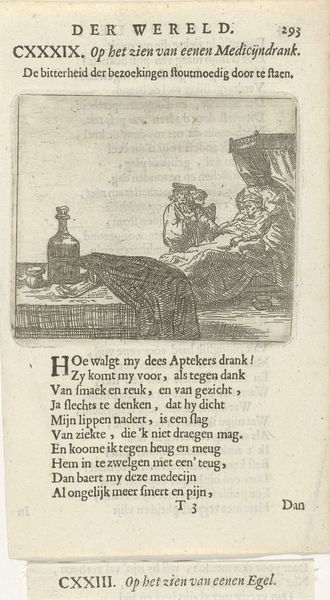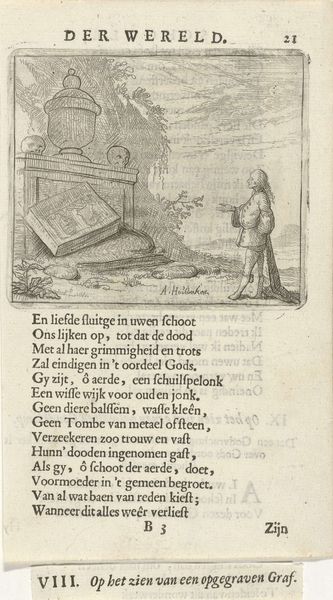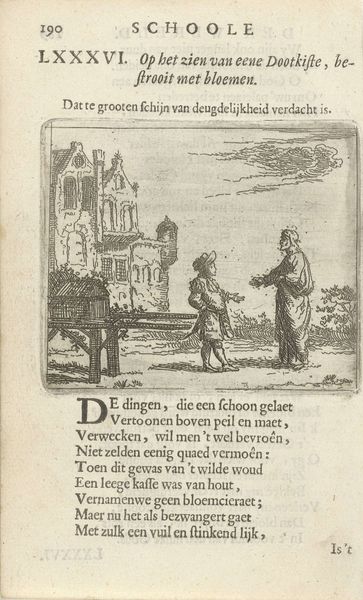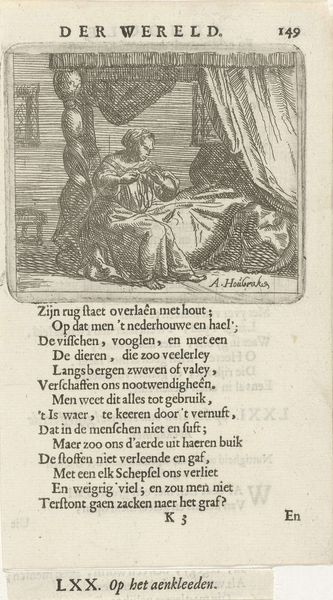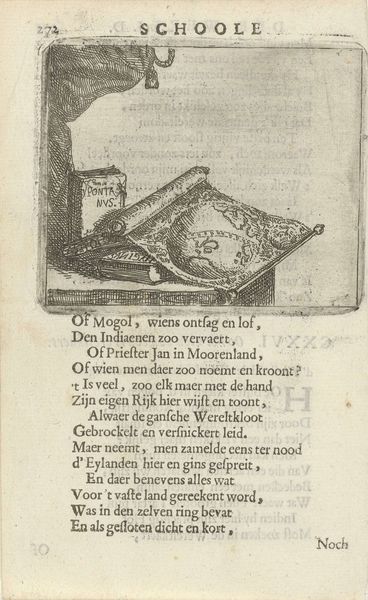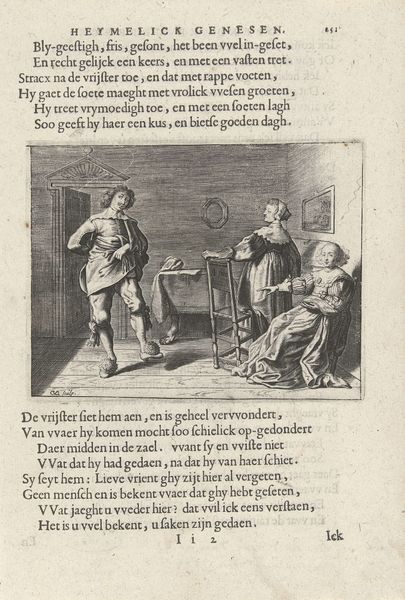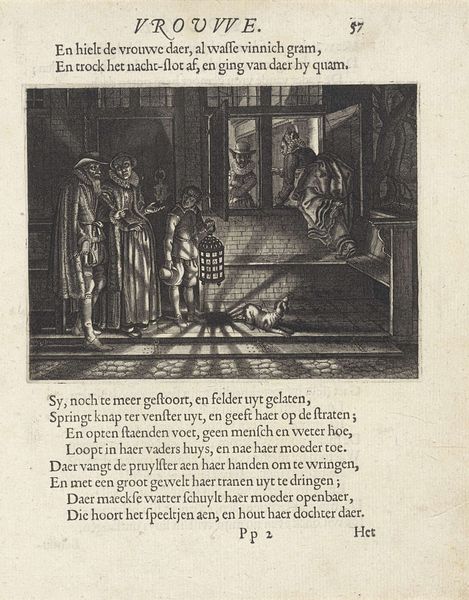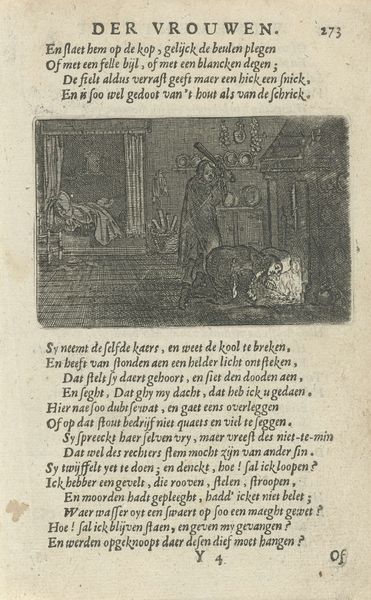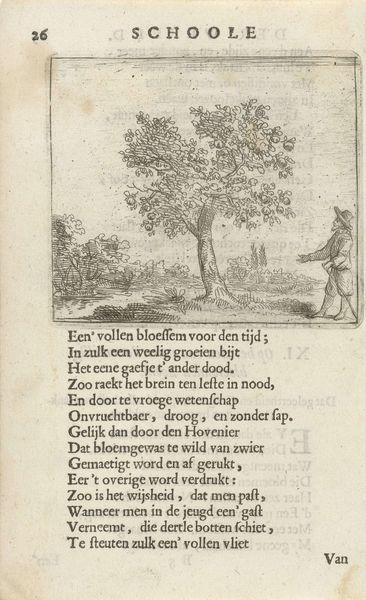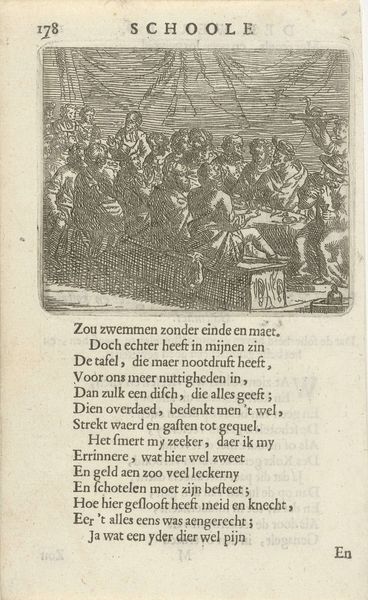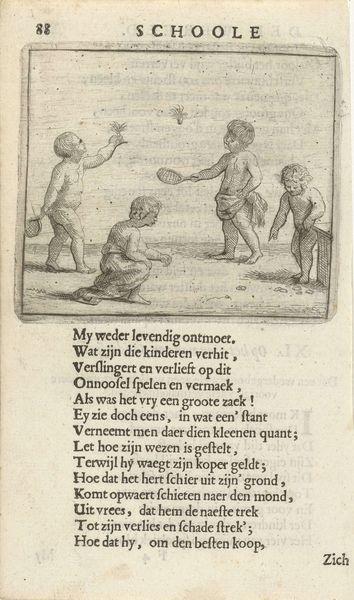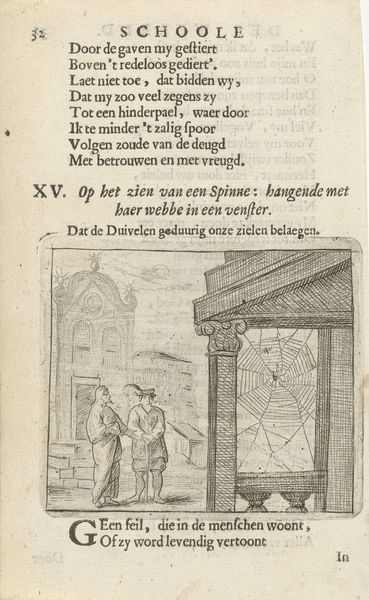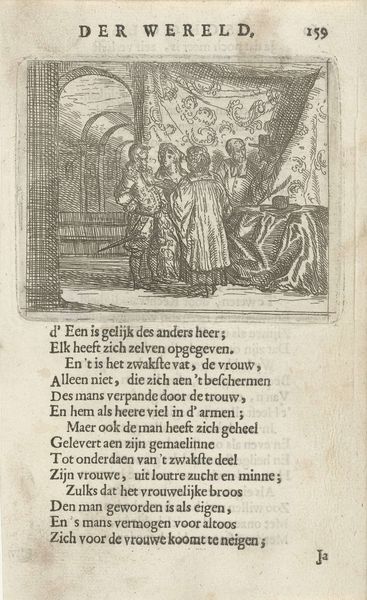
drawing, print, etching, ink
#
drawing
#
narrative-art
#
dutch-golden-age
# print
#
etching
#
figuration
#
ink
#
line
#
genre-painting
Dimensions: height 70 mm, width 84 mm, height 157 mm, width 94 mm
Copyright: Rijks Museum: Open Domain
Curator: Here we have Arnold Houbraken's etching from 1682, "Two Figures Inside a Blacksmith's Shop," currently held at the Rijksmuseum. Editor: My immediate impression is one of industry, and almost elemental force, wouldn't you say? It’s like peering into the heart of a forge, that dark room alive with raw energy. Curator: Indeed. The subject and, frankly, the materiality speak volumes. Note how the artist renders labor. The etching process itself mimics the laborious acts depicted. It would take many hands to make the tools for this work, but also the very ink on the paper is an item made with laborious material. Editor: I’m drawn to the light, such as it is, suggesting a larger metaphorical fire. For me, the blacksmith in art often serves as an alchemist, someone transforming base materials into something precious. Do you feel like there are some deeper layers to that sentiment represented here? Curator: Interesting. And certainly there are parallels in the era of emerging manufacturing, but the core purpose of workshops hasn't yet fundamentally changed. Still, it makes one think about how this form of craftsmanship served as a foundation. The lines of production for an increasingly mechanized era began here, which seems interesting as we view them from so long a remove. Editor: So, while I read the symbols and Houbraken's vision of transforming material, you see the foundations of labor as essential for production itself. Perhaps the beauty of the work lies in seeing both, the spirit, and the practical means to bring material to reality. Curator: It is certainly worth reflecting on what can be gleaned when viewing production itself as not simply a mechanical undertaking, but as a core function and element of society. The blacksmith and their role can provide more nuance and context when studying works such as this. Editor: Yes, indeed, seeing both the raw physical process and the transformative imagery offers a really rich perspective on our cultural connection to tools and labor.
Comments
No comments
Be the first to comment and join the conversation on the ultimate creative platform.
